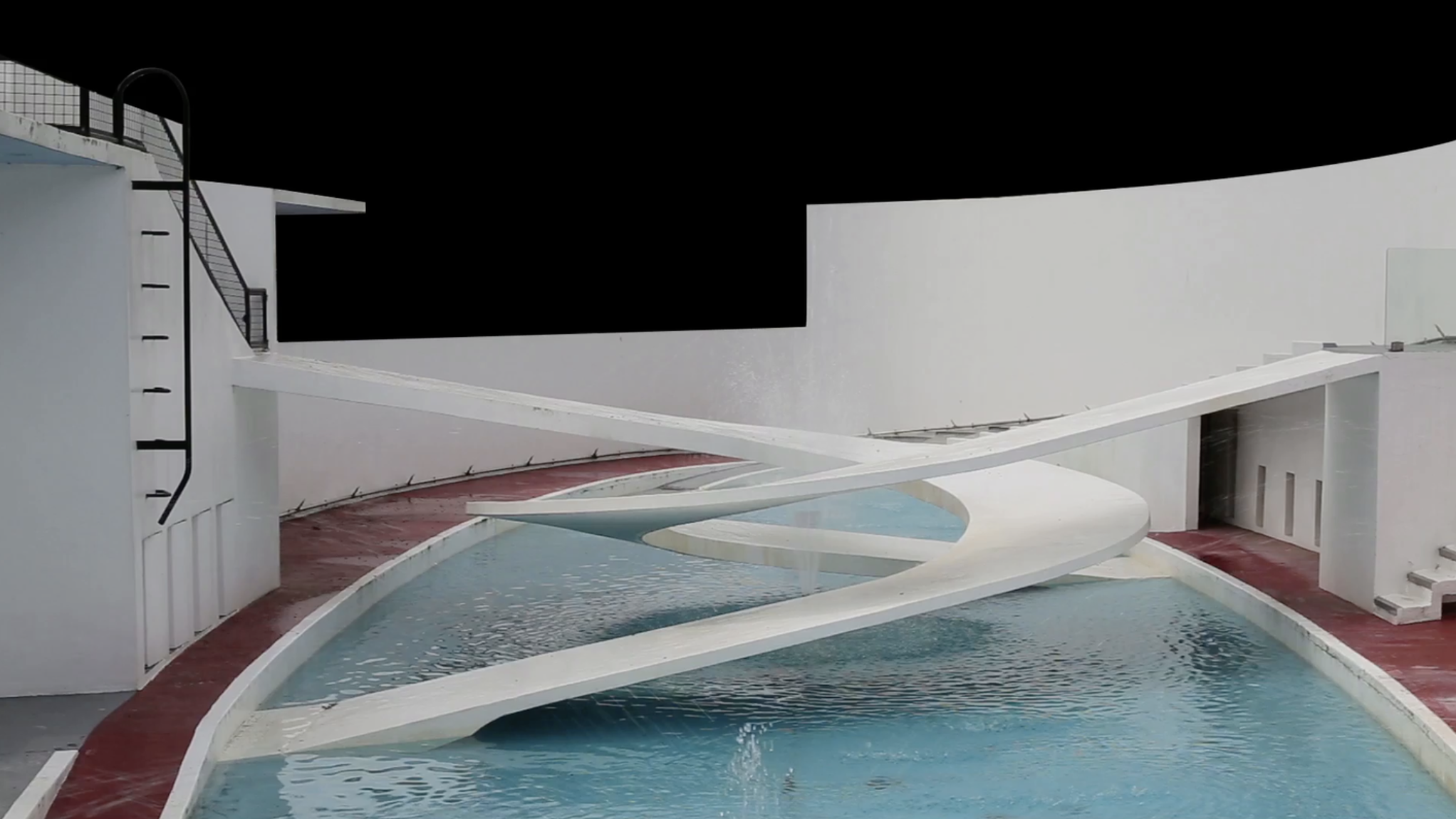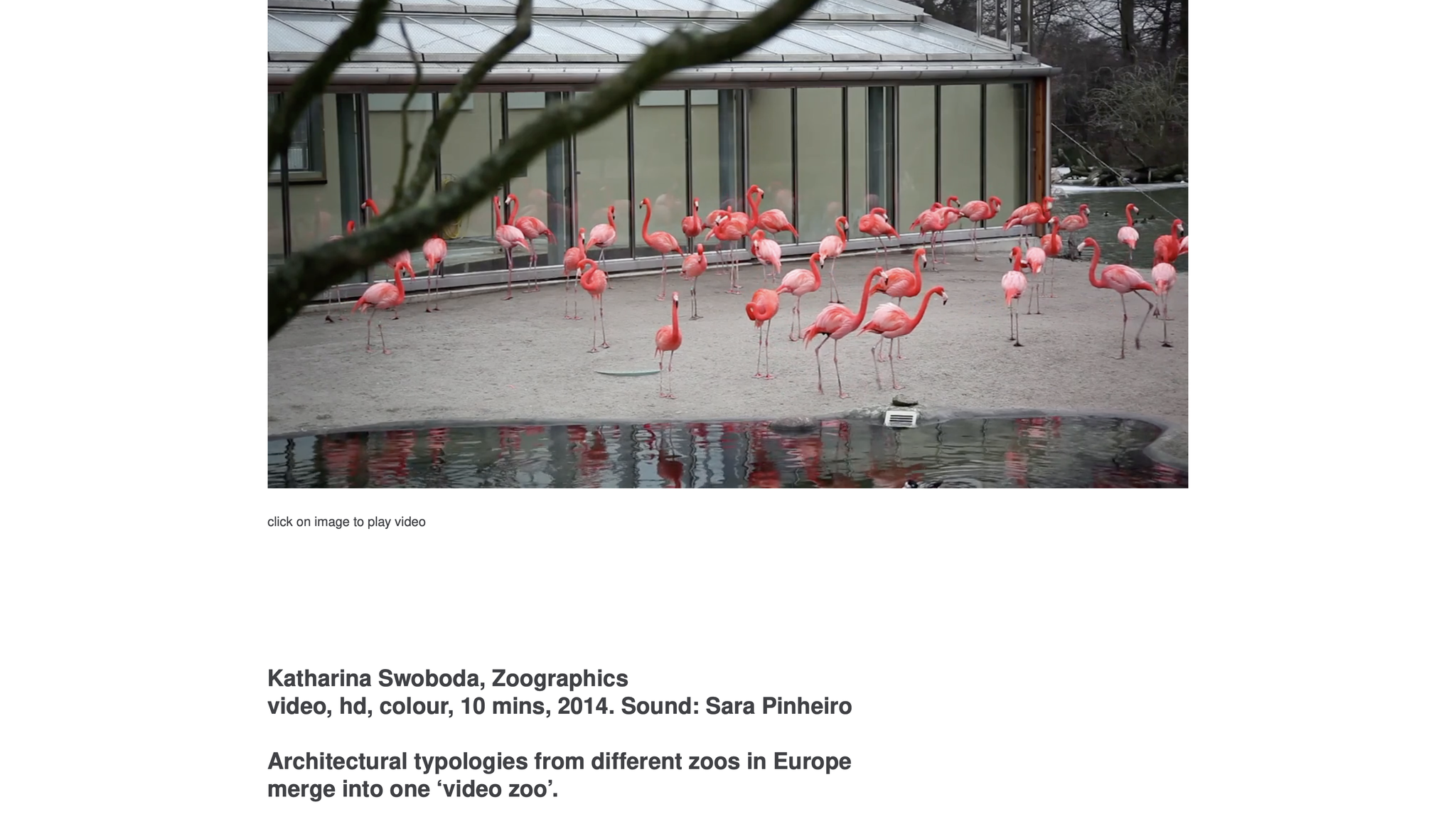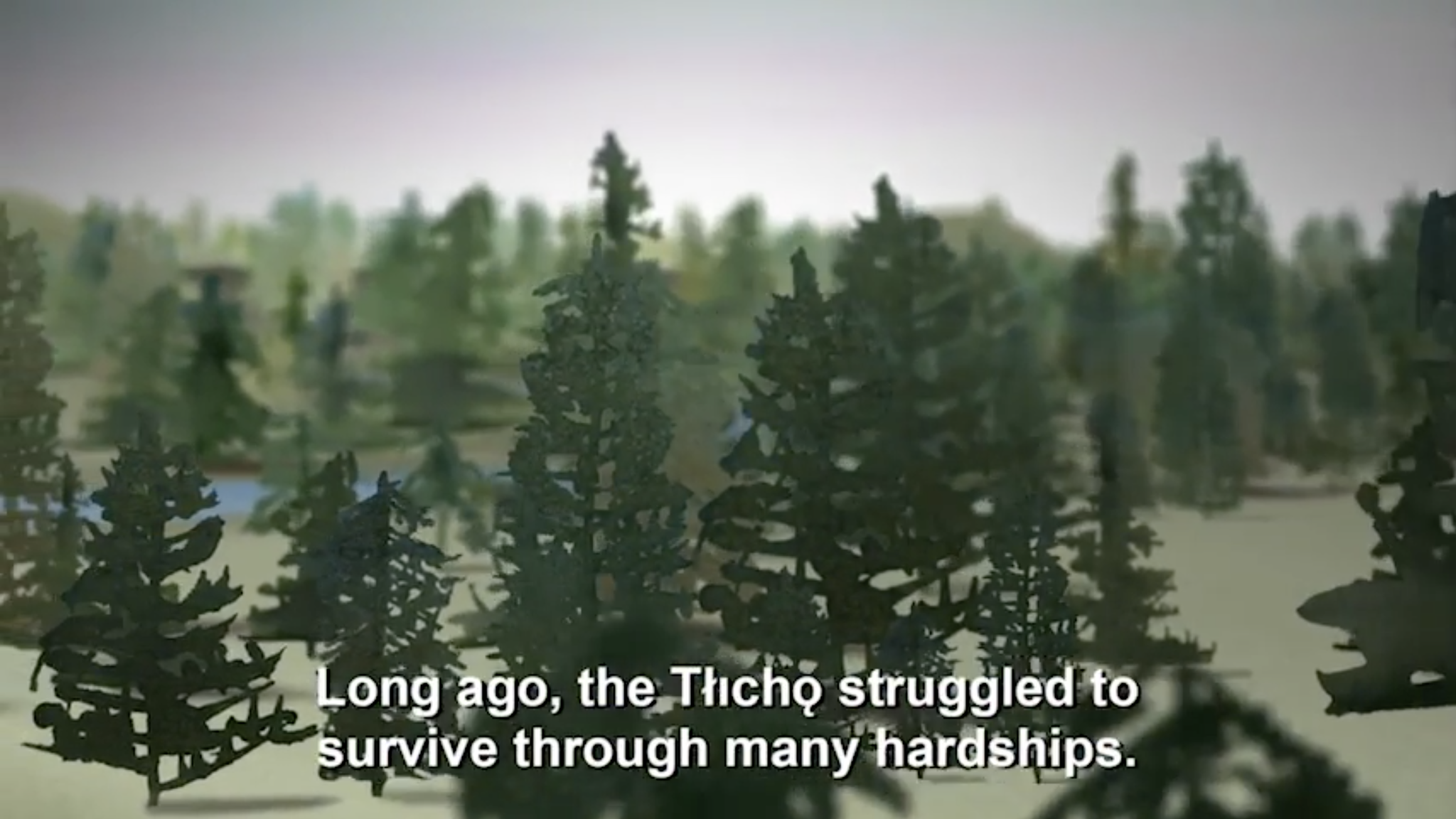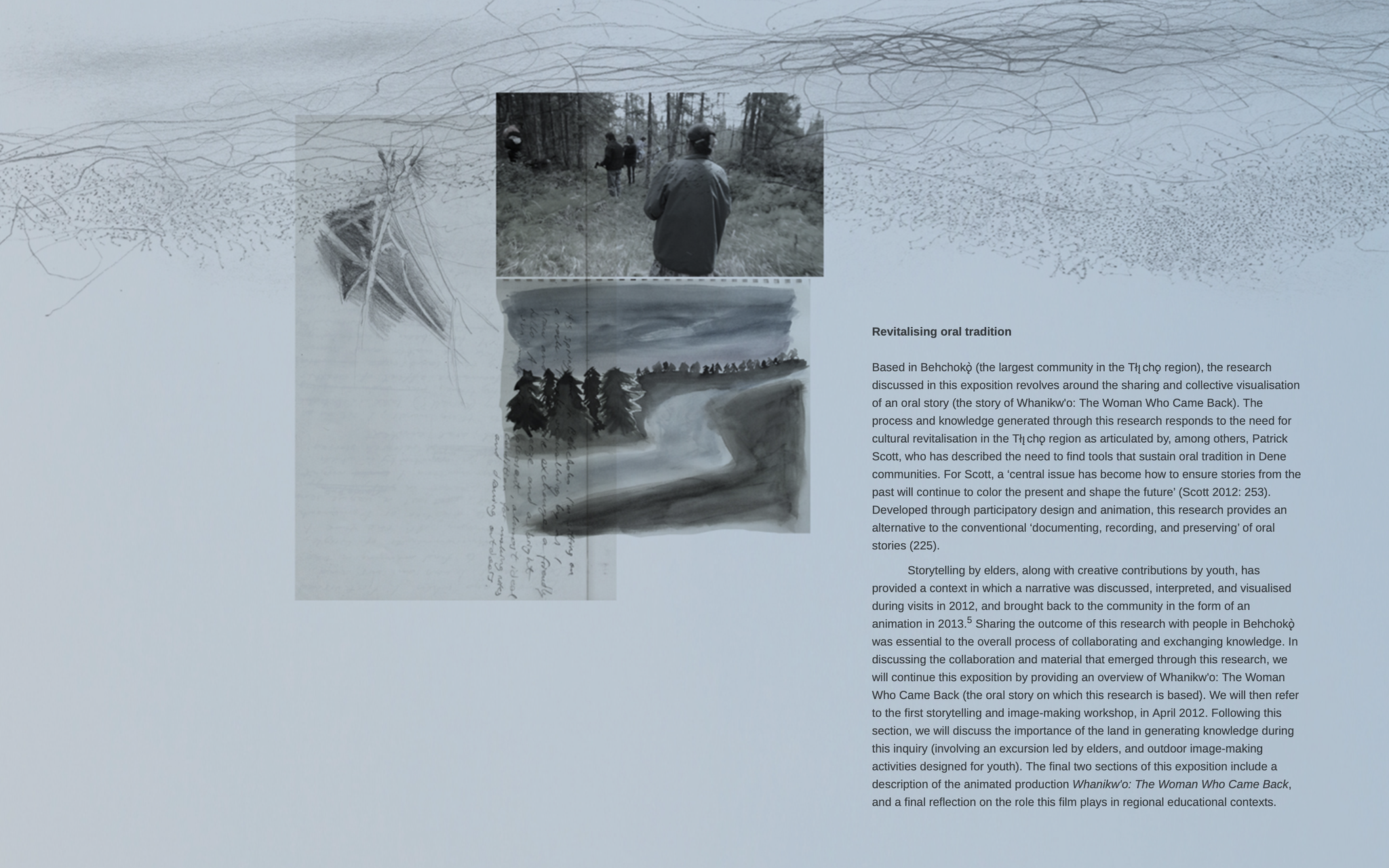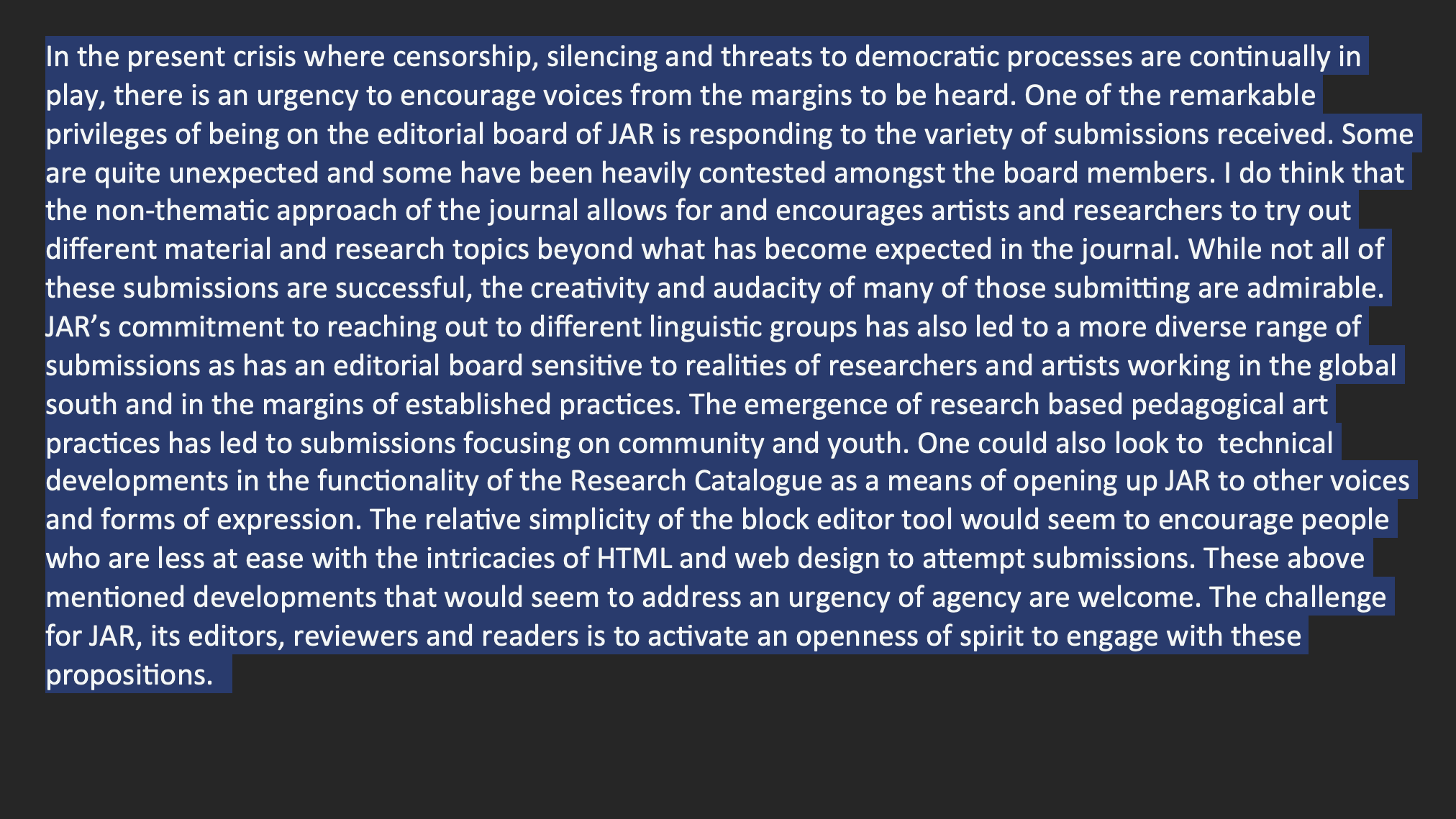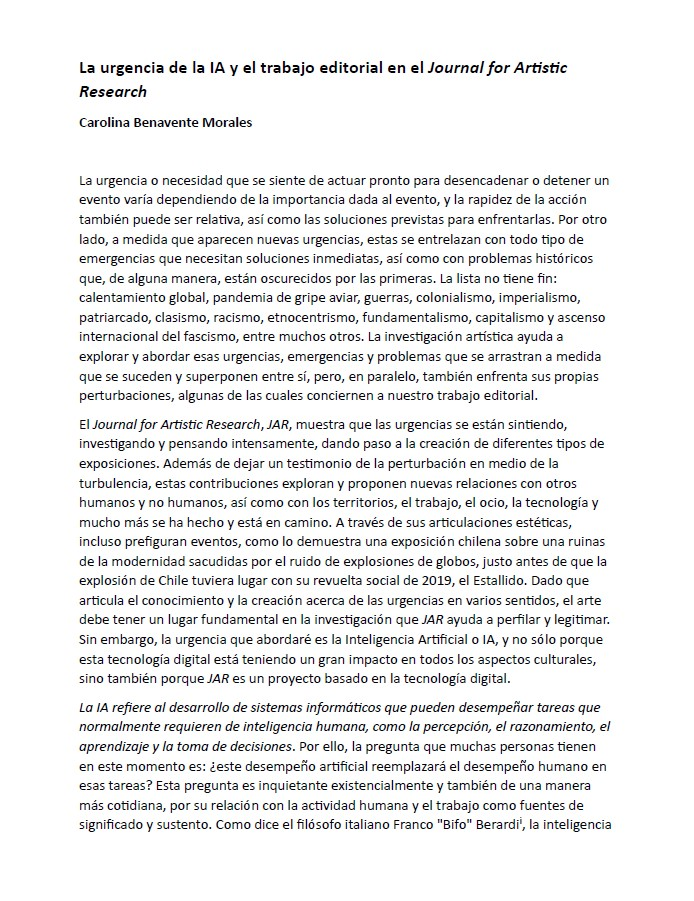For JAR's contribution to the conference in Trondheim, a number of JAR editors prepared a set of interventions followed by a panel discussion, a recording of which can be found at the bottom of this page.
We collaborated for a similar event during the 2022 conference in Weimar. See here.
Helly Minarti
Within my own context, of contemporary performing arts in Indonesia/Souhteast Asia/Asia, artistic research is another practice that is and has been always there, but has not been named as such. So now, naming the practice means an act of registering it into consciousness, as a way of making something probably already embedded and embodied, visible, verbally articulated. JAR, thus, resembles a rather new terrain to traverse.
Danny Butt
In their recent account of peer review practices in scientific publishing platform PLOS One, Martin Paul Eve[1] and colleagues note that the new technologies of online journal publishing have changed the spatial and temporal form of reading and writing, and thus of peer review. We have developed “a range of new, experimental practices that attempt to modify the peer-review workflow, changing the temporalities (pre- vs post-), visibilities (open identities vs anonymity), and positional relationalities (at-venue vs portability) of these practices.” In particular, what they call the “club model” of journals as a reading community gives way to a generic set of technical workflows that reflect academic publishing as a status game for authors who benefit from outputs and citation, not from people reading. Thus, the high-prestige journals such as Nature do not create a knowledge-based community, but one where gatekeeping fosters a jostling for bibliometric rank.
On the other side, platforms like PLOS One propose a more “open” model, but open actually means a lot of different things to different people. Ross-Hellauer [2] identifies seven different types of “open” peer review:
Open identities (‘Authors and reviewers are aware of each other’s identity.’)
Open reports (‘Review reports are published alongside the relevant article.’)
Open participation (‘The wider community are [sic] able to contribute to the review process.’)
Open interaction (‘Direct reciprocal discussion between author(s) and reviewers, and/or between reviewers, is allowed and encouraged.’)
Open pre-review manuscripts (‘Manuscripts are made immediately available (e.g., via pre-print servers like arXiv) in advance of any formal peer review procedures.’)
Open final-version commenting (‘Review or commenting on final “version of record” publications.’)
Open platforms (‘Review is facilitated by a different organizational entity than the venue of publication.’)
We are now over twenty years after some of the initial declarations on open science, but the practices of peer review remain diverse between sub-disciplines and even particular journals, and are stubbornly resistant to change.
JAR runs a rigorous peer review model, but one which is in many respects quite traditional. Some of the questions that occupy me in our discussions of peer review include:
-
Is peer review primarily for authentication of research quality in the scientific sense, or is its focus developmental in improving the final product in the aesthetic sense? Given the wide variety of methodological issues under consideration, a “scientific” approach seems unfeasible.
-
Related to the technical form of the research catalogue, how do we deal with design and presentation choices that have historically not been subject to a peer review paradigm? Almost no artist or designer historically looks to have their visual work authenticated and improved by the community in advance of publication. Traditional art and design criticism operates more like “post-publication” review in the humanities and social sciences. On the editorial board, we have sometimes experienced that feedback on design issues may lead to author resistance or even revisions that make submissions worse.
-
How do the roles of editors, lead editors from the board, and peer reviewers overlap? Paul has given some insight into the lead editorial process, where a member of the board offers to interpret the peer reviewer and board feedback and guide the revision of a submission. This happens anonymously, but is also quite hands on - again out of step with an artistic domain where one’s name personality is available for assessment in curatorial and editorial value judgements.
While there are no simple answers for any of these issues, I do think it is imperative that JAR commits to experimental revision of its review practices and seeks to find new modes of navigating the distinction between scholarly and artistic modes of quality assurance in editing and presentation. It is not too early, nor too late to think of new forms of peer review.
[1] Eve, Martin Paul, Cameron Neylon, Daniel Paul O’Donnell, Samuel Moore, Robert Gadie, Victoria Odeniyi, and Shahina Parvin. 2021. “Reading Peer Review: PLOS ONE and Institutional Change in Academia.” In Elements in Publishing and Book Culture. Cambridge University Press.
[2] Ross-Hellauer, Tony. 2017. “What Is Open Peer Review? A Systematic Review.” F1000 Research 6 (April): 588.
